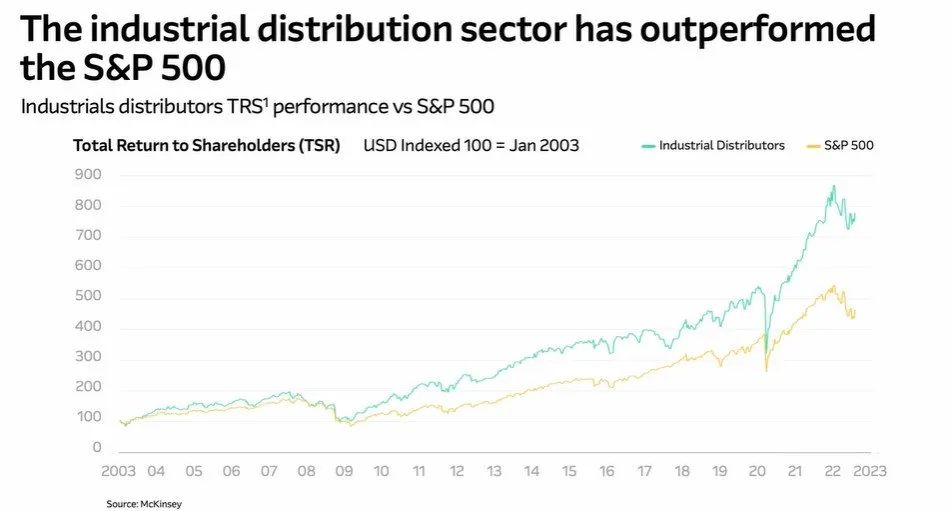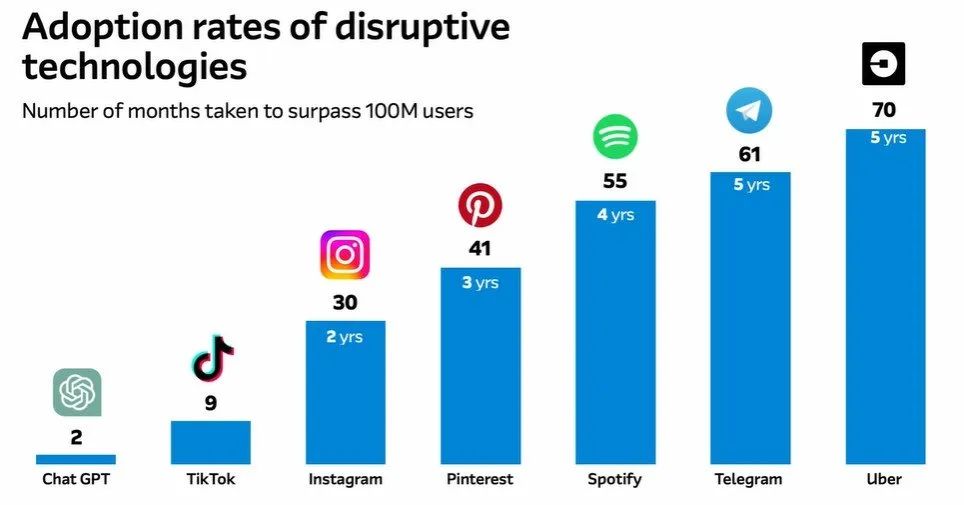Metrans is verified distributor by manufacture and have more than 30000 kinds of electronic components in stock, we guarantee that we are sale only New and Original!
According to McKinsey, the size of the U.S. distribution industry is approximately US$7 trillion, of which industrial distribution accounts for about half. If we compare it to a country, it will be one of the top ten economies in the world and a very huge industry. At the same time, due to the shortage of components in the supply chain, the distribution industry has become more prominent and important than before. It has attracted the attention of consumers, so that ordinary consumers have begun to understand and ask questions related to it.
When Shantnu Sharma, chief strategy and technology officer of Arrow Electronics, delivered a keynote speech at the "Global Distribution and Supply Chain Leadership Summit" held at the same time as IIC Shenzhen 2023, he showed the total return of a stock, or it should be called the total return of shareholders. As you can see, if you compare industrial distributors to the S&P 500, the performance of the former is much better. That's really impressive, isn't it?

Distributors in the semiconductor value chain
So, now that we understand the importance of distribution, what is the role of distribution in the semiconductor value chain?
As we all know, semiconductors have become the current cutting-edge core industry, known as the "new oil." From the perspective of suppliers and customers, suppliers refer to those traditional semiconductor design companies that produce electronic components, which are then used in various end products; while customers are the entities that create the final products, which are manufactured by Business and consumer purchases.
Arrow is an authorized dealer, or a franchised dealer in industry terms, located between suppliers and customers. In other words, Arrow delivers these components to the customer and helps in many ways - Arrow has teams of engineers who work with the end customer to help design these semiconductor parts. Once the design is complete, Arrow will source the components and sell them to customers.
Shantnu Sharma emphasized that "Arrow is an authorized dealer of these original component manufacturers, which is very important!" Because the electronics and semiconductor industry is grappling with the problem of counterfeit and substandard components, as an authorized dealer, it will help solve the problem. this problem.
But Arrow does much more than that, and to some extent, even goes beyond traditional distribution. For example, for some customers, Arrow manages a large-scale global supply chain not only for equipment manufacturers and suppliers, but also has a very complex engineering design service portfolio and huge software analysis capabilities, all of which are providing customers and suppliers with Help.
Take the Arrow SiliconExpert platform as an example. This platform brings together data from about 20,000 electronic distributors and suppliers. It is the most comprehensive and objective component data in the industry. Such data aggregation capabilities can undoubtedly achieve accurate predictions and Compliance management, understanding demand and supply.
For small and medium-sized semiconductor companies, they may not have the channels to bring technology to market quickly or scale it to the required scale. At this time, Arrow's global distribution network will be able to help customers' technologies quickly enter the market and expand scale; if it is a large customer with deep expertise in a vertical field but lacks semiconductor engineering design expertise, Arrow's engineering team can provide A complete turnkey solution to help with product promotion. For example, Arrow's eInfochips business is a leading engineering service provider; for another example, Arrow has completed approximately 40 million technology deployments in 140 countries, which are very huge numbers.
How to become an excellent distributor?
What Shantnu Sharma refers to here is differentiated distributors and ordinary distributors. He said there is no standard measurement scale between the two, but some characteristics that help improve distributor effectiveness can distinguish average distributors from excellent distributors. The first is scale. Large distributors can take advantage of economies of scale and offer services and capabilities that smaller players find difficult to match. At the same time, large differentiated distributors pay more attention to customer needs and industry trends, can provide products that traditional or ordinary distributors cannot supply, and create value-added services that are helpful to customers.
"For them, market channels and any link in product supply are key, which means having stable customers and suppliers." Shantnu Sharma said that he has asked customers many times how they want to use Arrow's services, and which channel is best for them? Arrow quickly adjusts to customer needs.
Finally, distributors who pursue differentiation view growth with a holistic view. They will not only focus on their core markets, but also invest wisely in related areas and breakthroughs, which will help them quickly surpass their peers.
When talking about the topic of supply shortages during the epidemic, Shantnu Sharma said that there are many things worth thinking about again and again, but the following three points are more important: First, the visibility of the supply chain is very important for customers and distributors themselves; There needs to be increased transparency from end customers to distributors to component manufacturers and possibly even further upstream; secondly, it is very important to build strategic relationships with customers and suppliers and make calls at the right stage and at the right time Communication can really speed up the problem-solving process; third, supply shortages and challenges during the epidemic provide distributors with opportunities to solve supply chain problems. "During the pandemic, both we and our competitors have received calls from customers wanting to work with us. Before the pandemic, they might not have done so."
Major technology trends for the future
Obviously, this is a pretty broad topic. Although no one has a crystal ball in their hands and cannot predict accurately, Shantnu Sharma believes that during the communication process with customers, they are very interested in the following trends.
The first is artificial intelligence. The popularity of AI is nothing new. However, Shantnu Sharma’s view is that “more important than AI itself is the ‘democratization of the use of artificial intelligence,’ especially generative artificial intelligence.”
Currently, leading companies in all walks of life are using artificial intelligence tools to improve customer value and operational efficiency. The emergence of artificial intelligence has indeed allowed applications like ChatGPT to be widely adopted in just 2 months ( The number of users exceeds 100 million), far exceeding other technologies. This is a situation that has never been seen before.

According to Shantnu Sharma, the success of AI is due to several boosting factors: cloud architecture is becoming increasingly mature, and its excellent economic benefits and agility benefits play a key role in artificial intelligence; the COVID-19 epidemic has highlighted digital transformation urgency to ensure the flexibility of business operations and continuity in the face of future emergencies. In other words, the three different directions or cycles of cloud computing, digital transformation and artificial intelligence are combining with each other to create huge value in various fields.
On the other hand, the artificial intelligence industry still faces many challenges, such as safety, regulatory and even ethical issues. In addition, there are currently some bubble effects and uncertainties in the market, including the timing and potential of commercial returns. But overall, it's a trend that could define a generation.
Shantnu Sharma also talked about the second wave of technology. Although they have gradually faded from public view, they still have great potential and may regain public attention. In fact, some technologies, such as AR, VR, Metaverse, etc., have reached a critical point in the game industry and have been widely used, but their application development in other fields has been relatively slow.
Web 3 is another area that is on the wane and is being viewed with more caution. In addition, there will be more progress in digital currency, intelligent computing, smart contracts, decentralized finance, Bitcoin, etc. Of course, electrification is also an important trend, making everything electric.



